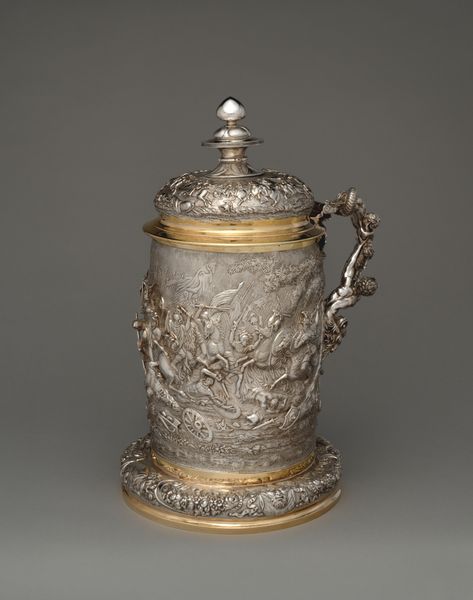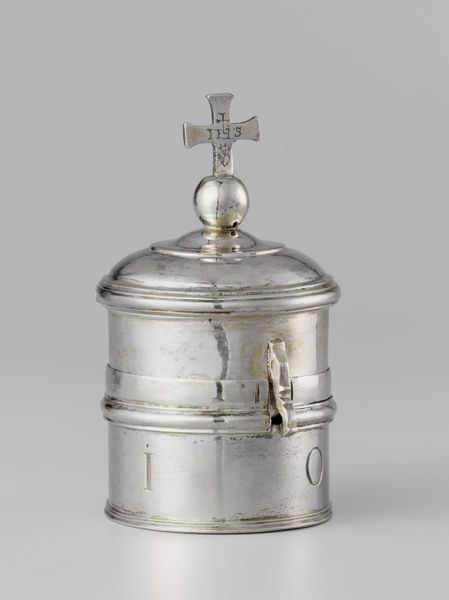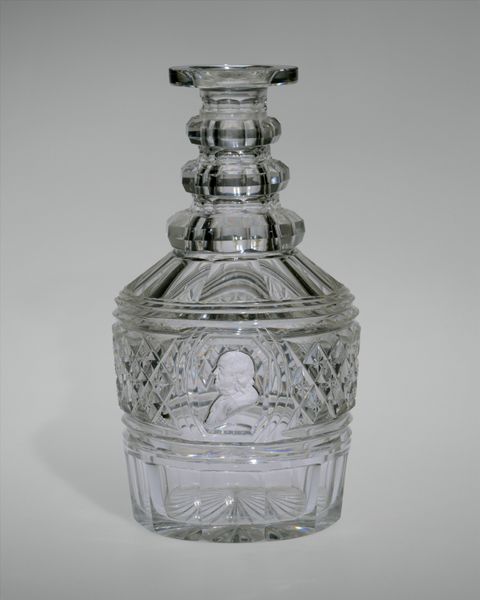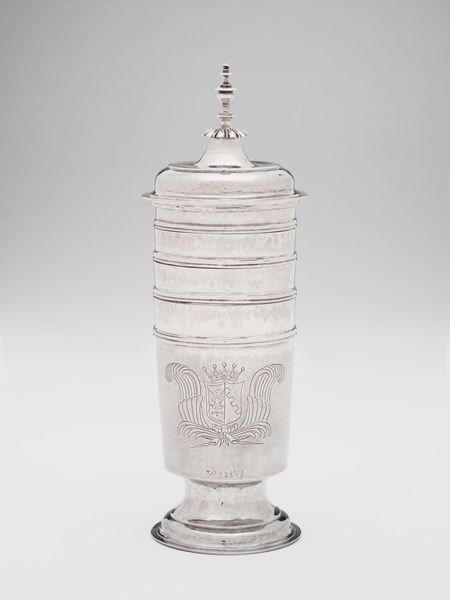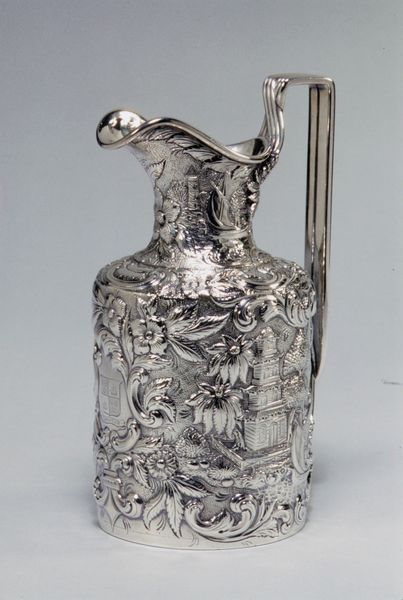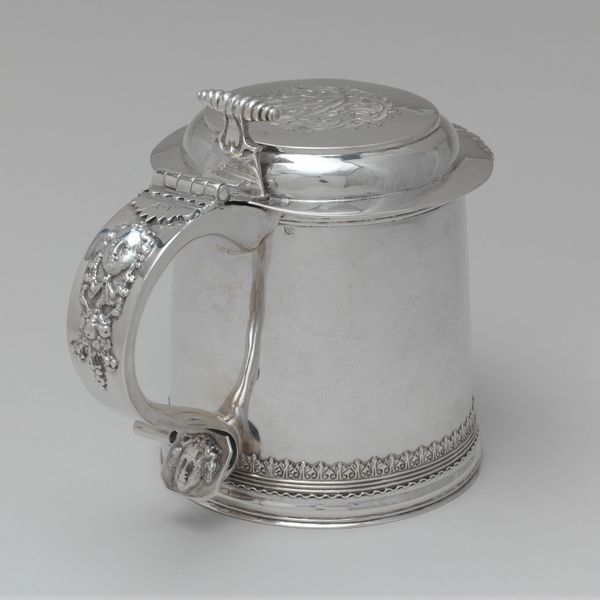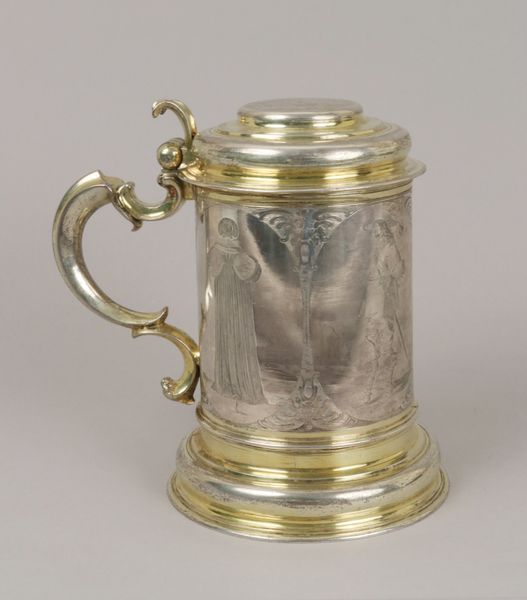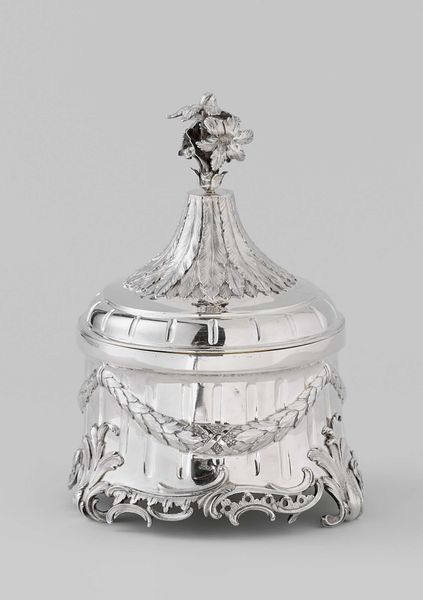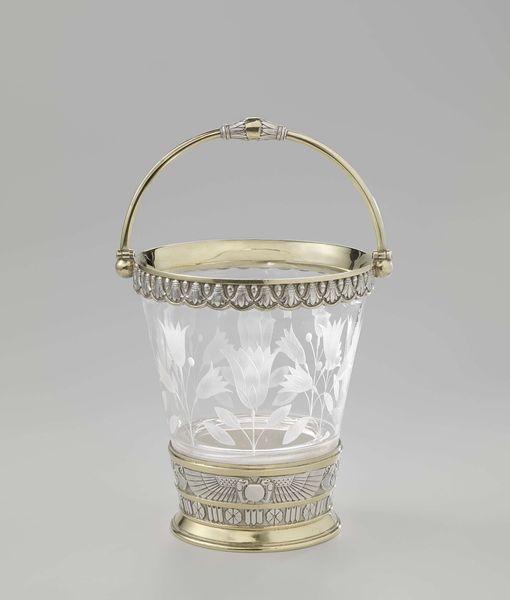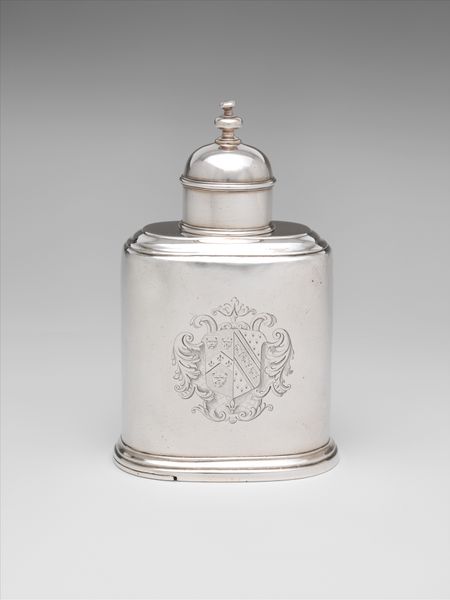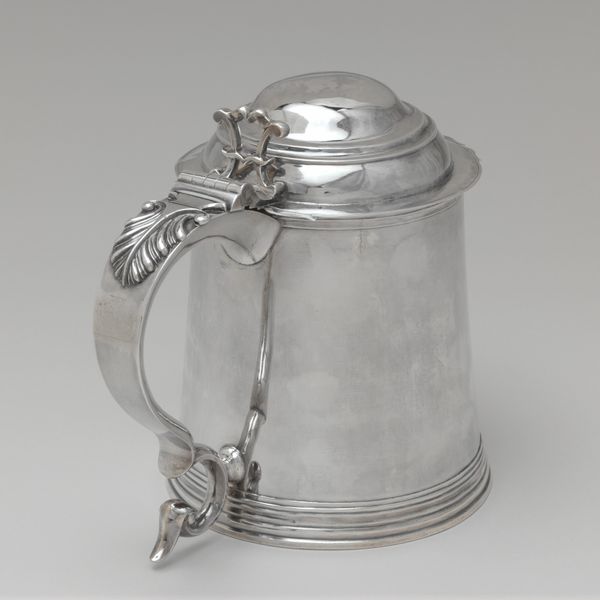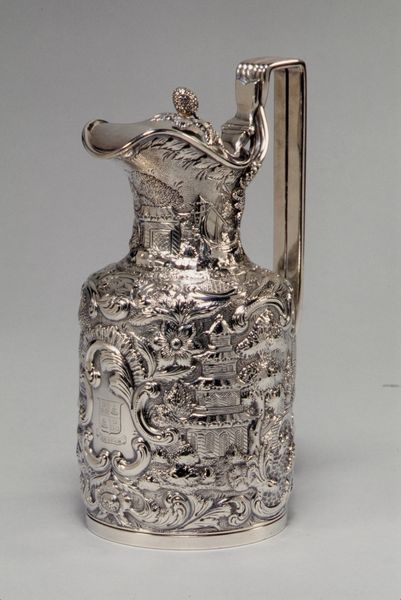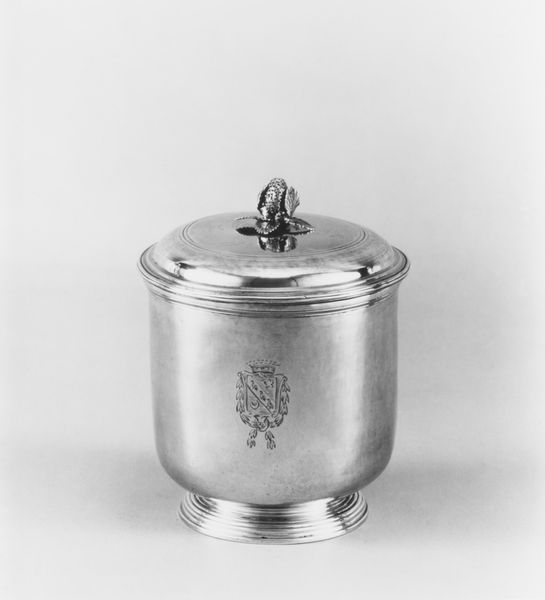
silver, metal, relief, sculpture
#
medieval
#
silver
#
baroque
#
metal
#
relief
#
sculpture
Dimensions: height 11.5 cm, diameter 4.3 cm, weight 204 gr
Copyright: Rijks Museum: Open Domain
Curator: So, let's delve into this object. What do you make of it? Editor: This is the "Chrismatorium," dating back to about 1650, created by Michiel Esselbeek. It's crafted from silver and features relief sculpture. I'm struck by how ornate it is; it feels almost like a miniature stage. What catches your eye? Curator: What grabs my attention is precisely that theatricality, its Baroque sensibility. Given its purpose, a container for holy oil, we need to consider the performative aspects of religion and power in the 17th century. Who was commissioning such elaborate objects and why? Consider how displays of wealth and status often intertwined with religious devotion, legitimizing social hierarchies. Editor: That's a compelling point. The craftsmanship seems so delicate for something that holds oil. Is there any symbolism, say, with the scenes depicted? Curator: Absolutely. Baroque art thrived on allegory and symbolism. We must ask, which stories are being told in relief? And, importantly, whose stories are being centered, and from what perspective? Is it mythologizing power, or speaking to more subversive narratives of devotion? Editor: It makes me wonder about the access to the narratives that it presents. I mean, were they reserved for a select group, or were these types of displays intended for a broader audience to feel included and reverent? Curator: Precisely. It becomes an intersectional investigation. Considering how objects like these perpetuated societal power structures prompts essential dialogues about representation, access, and how art both reflects and reinforces prevailing ideologies. Editor: I see it now as more than just an ornate object. I am intrigued to dig deeper into who made this, for whom, and the underlying power structures that it reflects. Thank you. Curator: Indeed, viewing this piece through the lens of social and political power reveals the narratives and nuances often unseen at first glance. A good reminder to be reflexive of our position when analyzing any artwork.
Comments
No comments
Be the first to comment and join the conversation on the ultimate creative platform.
